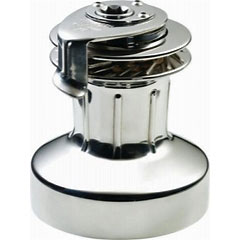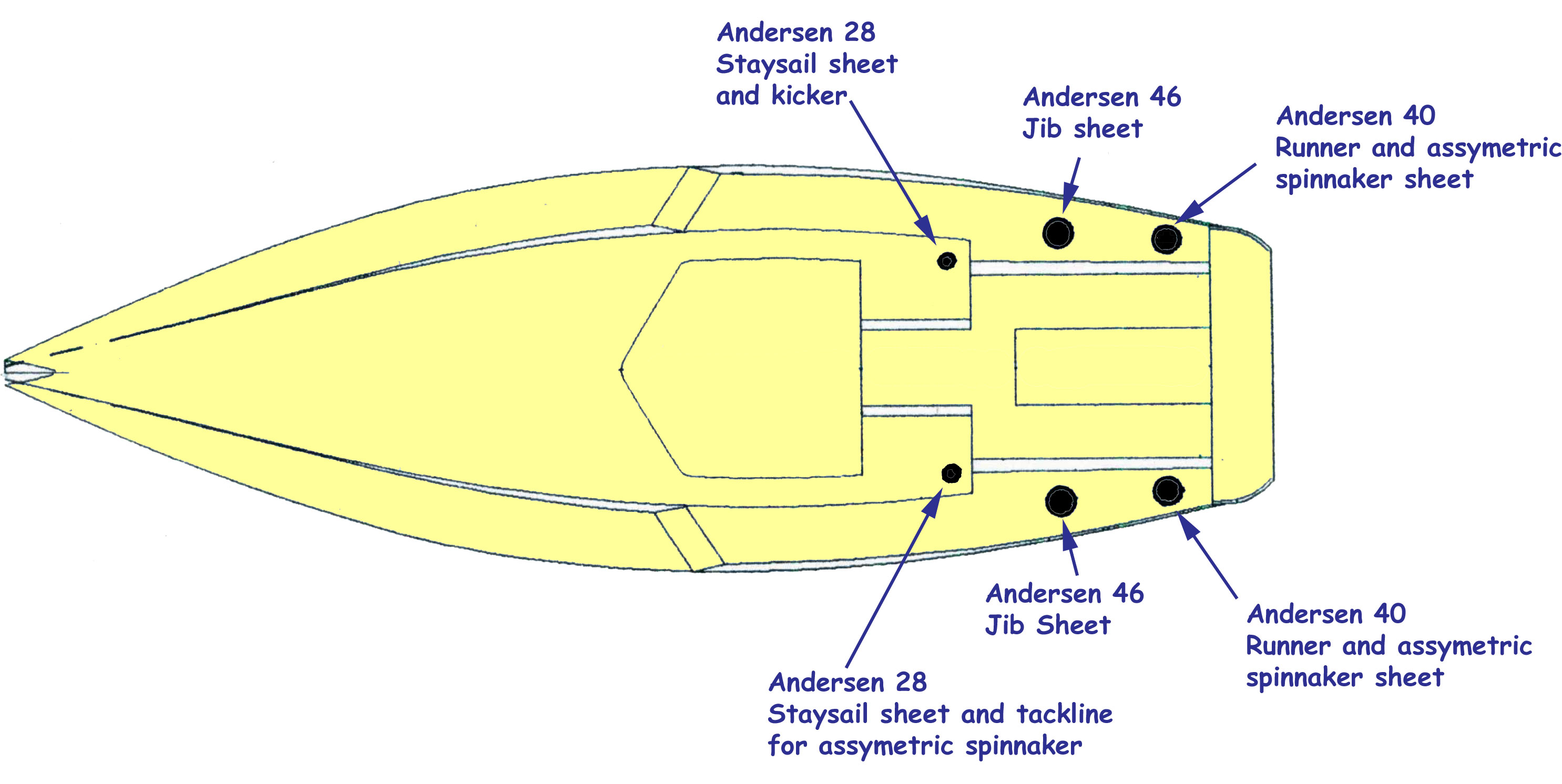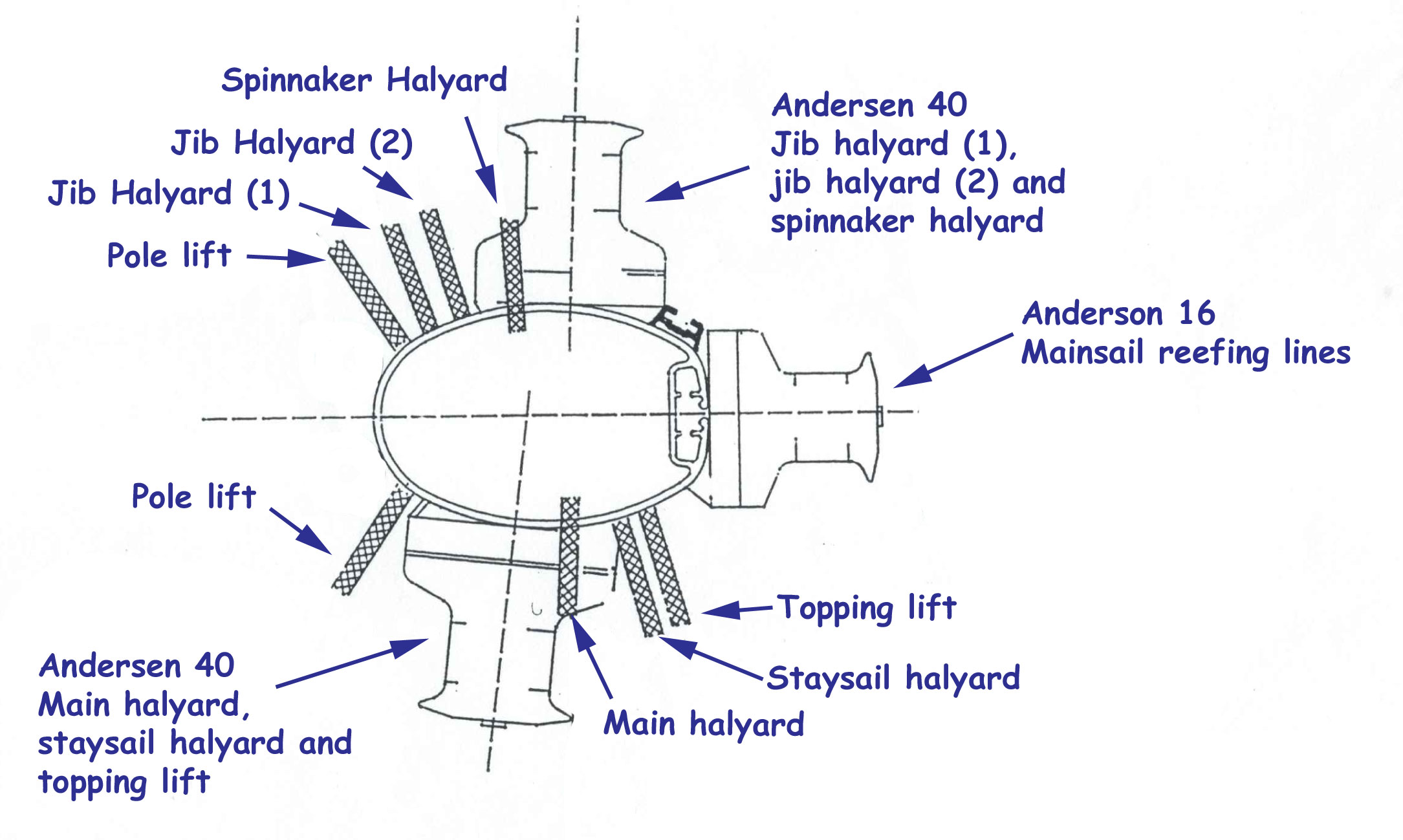Is it Time to Upgrade Your Sailboat Winches?
In a Nutshell...
Upgrading your sailboat winches can significantly improve your sailing experience, making sail handling easier, faster, and safer. Key considerations include choosing between manual and electric winches, selecting the correct size and gear ratio for your boat's rigging loads, and ensuring proper installation. Manual winches are a reliable and cost-effective choice, while electric winches offer the convenience of push-button operation, reducing physical strain, especially on larger boats. The best choice depends on your sailing style, budget, and physical needs.
Table of Contents
The Case for Upgrading Your Winches
As a fellow sailor, I know the satisfaction of a well-executed tack or the perfect trim of a headsail. But I also know the fatigue that comes with grinding a winch handle countless times, especially when a gust hits or a race is on the line. When my wife and I were cruising the English Channel, a sudden squall hit as we were trying to furl the genoa on our old Nicholson 32. The wind was howling, and the physical effort required to winch in the sail felt Herculean. It was in that moment, exhausted and fighting the wind, that I decided it was time to consider an upgrade.
Your winches are the mechanical muscle of your sailboat. They multiply your strength, allowing you to hoist halyards, trim sheets, and tension lines that would otherwise be impossible to handle by hand. Over time, however, winches can become less efficient, or your sailing needs might simply change. Perhaps you're moving up to a larger boat, or maybe you're looking for a way to make sailing more accessible for a partner or crew member. This article will help you navigate the options and make an informed decision.
Manual Winches: The Classic & Cost-Effective Option
Manual winches are the backbone of most sailboats. They are simple, reliable, and require no power source other than your own muscle. They come in a variety of sizes, which are denoted by a number (e.g., a size 40 winch). This number isn't a direct measurement but a reference to the power ratio, indicating how much mechanical advantage the winch provides.
When choosing a manual winch, you'll encounter single-speed and two-speed models. Two-speed winches are the most common and practical choice. The first gear is a low-speed, high-power setting for initial tensioning (e.g., hoisting a main halyard), while the second gear is a high-speed, lower-power setting for quick trimming (e.g., fine-tuning a jib sheet). This versatility is invaluable.
The primary advantages of manual winches are:
- Cost: They are significantly less expensive to purchase and install than their electric counterparts.
- Reliability: With fewer moving parts and no electrical systems, they are less prone to failure.
- Simplicity: Maintenance is straightforward, typically involving a yearly cleaning and greasing of the gears.
When upgrading a manual winch, consider a self-tailing model. Self-tailing winches have a mechanism that automatically grips the line as you turn the handle, freeing up one hand and making sail trimming a single-person job. This is one of the most impactful upgrades you can make on a cruising sailboat. I've sailed on boats both with and without them, and the difference in ease and speed is remarkable.
 An Andersen 2-speed self-tailing winch
An Andersen 2-speed self-tailing winchElectric Winches: Power, Precision & Ease
If you're looking to eliminate the physical strain of grinding winches, especially on a larger yacht, an electric winch is the way to go. They operate with the push of a button, making sail handling accessible to sailors of all ages and physical abilities. Electric winches come in both single-speed and two-speed versions, with the latter offering more control over line tension.
Electric winches are a game-changer for short-handed sailing. A good pal of mine here in Plymouth UK has a Dehler 36 CWS (Central Winch System) cruising boat. The single electric winch is cleverly positioned so that it can operate all halyards, sheets and control lines enebling him to easily sail the boat single-handed. For older sailors, couples, or those with any physical limitations, the upgrade from a manual to an electric winch can extend their sailing careers for years.
Key benefits of electric winches include:
- Effortless Operation: Reduces physical strain and fatigue, especially during long passages or racing.
- Enhanced Safety: Allows for precise, controlled trimming of sheets and halyards without needing to physically fight the line.
- Short-Handed Sailing: Makes sail handling manageable for a single sailor or a small crew.
The main downsides are the initial cost, the complexity of installation (including wiring and circuit protection), and the need for a robust battery bank to handle the power draw. However, for many sailors, the benefits far outweigh these drawbacks.
Selecting the Right Winch: A Practical Guide
Choosing the right winch is a balance of power, speed, and budget. Here’s a quick guide to help you decide:
| Winch Type | Best For | Pros | Cons |
|---|---|---|---|
| Manual Winch | Cruising & racing on smaller boats, sailors on a budget. | Low cost, high reliability, simple maintenance. | Requires significant physical effort, slower operation. |
| Self-Tailing Manual Winch | Upgrading from non-self-tailing, short-handed sailing. | Frees up a hand, faster trimming, excellent value. | Still requires physical effort. |
| Electric Winch | Larger yachts, short-handed cruising, sailors with physical limitations. | Effortless operation, faster sail handling, high safety. | High cost, complex installation, requires battery power. |
| Reversible Electric Winch | Advanced applications, fine-tuning sail trim. | Offers both up and down control with a button. | Most expensive option, increased complexity. |
The most important factor is sizing the winch correctly for your boat. Winch manufacturers provide sizing charts that correlate winch size to the boat's displacement, sail area, and the loads on specific lines (e.g., a primary winch for a genoa sheet will be larger than a halyard winch). I always recommend using these charts as a starting point and consulting with a rigger or a sailmaker to get a second opinion. When I installed new primary winches on a previous boat, I brought my sailmaker in to assess the loads on the genoa sheets under full sail. This ensured I chose a winch that could handle the forces without overworking or damaging the system.
Sizing & Placement: The Installation Essentials
Once you've chosen your new winches, proper installation is critical for safety and performance.
- Sizing: The size of your winch is determined by the loads it will handle. A winch that is too small will require excessive effort and could be damaged, while one that is too large may be unnecessarily heavy and expensive. The manufacturer's sizing guide is your best friend here. It's often based on the boat's length and displacement, providing a good baseline.
- Placement: Correct placement ensures a clean lead for the sheet or halyard, preventing it from binding and ensuring a smooth, efficient pull. The winch should be positioned so that the line feeds into it at the correct angle—usually from a deck organizer or block. The winch handle should have a full, unobstructed range of motion. For electric winches, you must consider the routing of heavy-gauge electrical cables to a suitable power source and the placement of the control switch.
The correct sizing and placement of winches is critical for safety and operational efficiency of your boat—for all other aspects you should take a look at our A-Z of Sailboat Rigging & Maintenance Guide.
 Location of cockpit winches on our self-build boat, 'Alacazam'
Location of cockpit winches on our self-build boat, 'Alacazam'We chose not to have the halyards brought back to the cockpit, but retained them at the mast to avoid a snake-pit of lines in the cockpit.

Winch Maintenance & Longevity
Regardless of whether you have manual or electric winches, regular maintenance is key to a long and reliable service life. At a minimum, winches should be serviced once a year. This involves:
- Disassembling the winch.
- Cleaning all parts with a solvent (such as white spirit).
- Checking for any worn or damaged parts.
- Re-greasing the gears.
- Re-oiling the pawls and springs.
For electric winches, you also need to inspect the wiring and electrical connections for corrosion and ensure the motor is properly sealed against water ingress. This is a job you can do yourself with some patience and the right tools, but if you are unsure, it's always best to call in a professional marine engineer.
Article written by Dick McClary, RYA Yachtmaster & Yachting Journalists Association (YJA) member.
Frequently Asked Questions (FAQs)
How do I know what size winch I need?
How do I know what size winch I need?
Refer to the manufacturer's sizing charts, which are based on your boat's length, displacement, and sail area. It’s a good idea to consult with a rigger or sailmaker as well.
Can I replace a manual winch with an electric one?
Can I replace a manual winch with an electric one?
Yes, but it's a more complex installation. You'll need to drill a hole for the power cable, route the wiring to a power source, and install a circuit breaker.
What is a self-tailing winch?
What is a self-tailing winch?
A self-tailing winch automatically grips the line as you turn the handle, freeing up one hand and making it much easier for a single person to manage a sail.
How often should I service my winches?
How often should I service my winches?
At least once a year. Regular maintenance prevents wear and tear, ensuring your winches operate smoothly and reliably for years to come.
Sources
Recent Articles
-
Hans Christian 43: Classic Bluewater Cruiser & Liveaboard Sailboat
Dec 10, 25 04:37 AM
Explore the Hans Christian 43: a legendary heavy-displacement, long-keel sailboat. Read our in-depth review of its specs, design ratios, and suitability for offshore cruising and living aboard. -
Planning Your Sailboat Liveaboard Lifestyle: An Ocean Sailor's Guide
Dec 06, 25 05:18 AM
Seasoned sailors share their methodical risk analysis for planning a secure Sailboat Liveaboard Lifestyle, covering financial, property, and relationship risks. -
Marine Cabin Heaters: The Expert’s Guide to Comfort & Safety at Sea
Dec 05, 25 06:52 AM
Choose the best Marine Cabin Heaters for your vessel. Expert advice on diesel, paraffin, and hot water systems for year-round cruising comfort.












